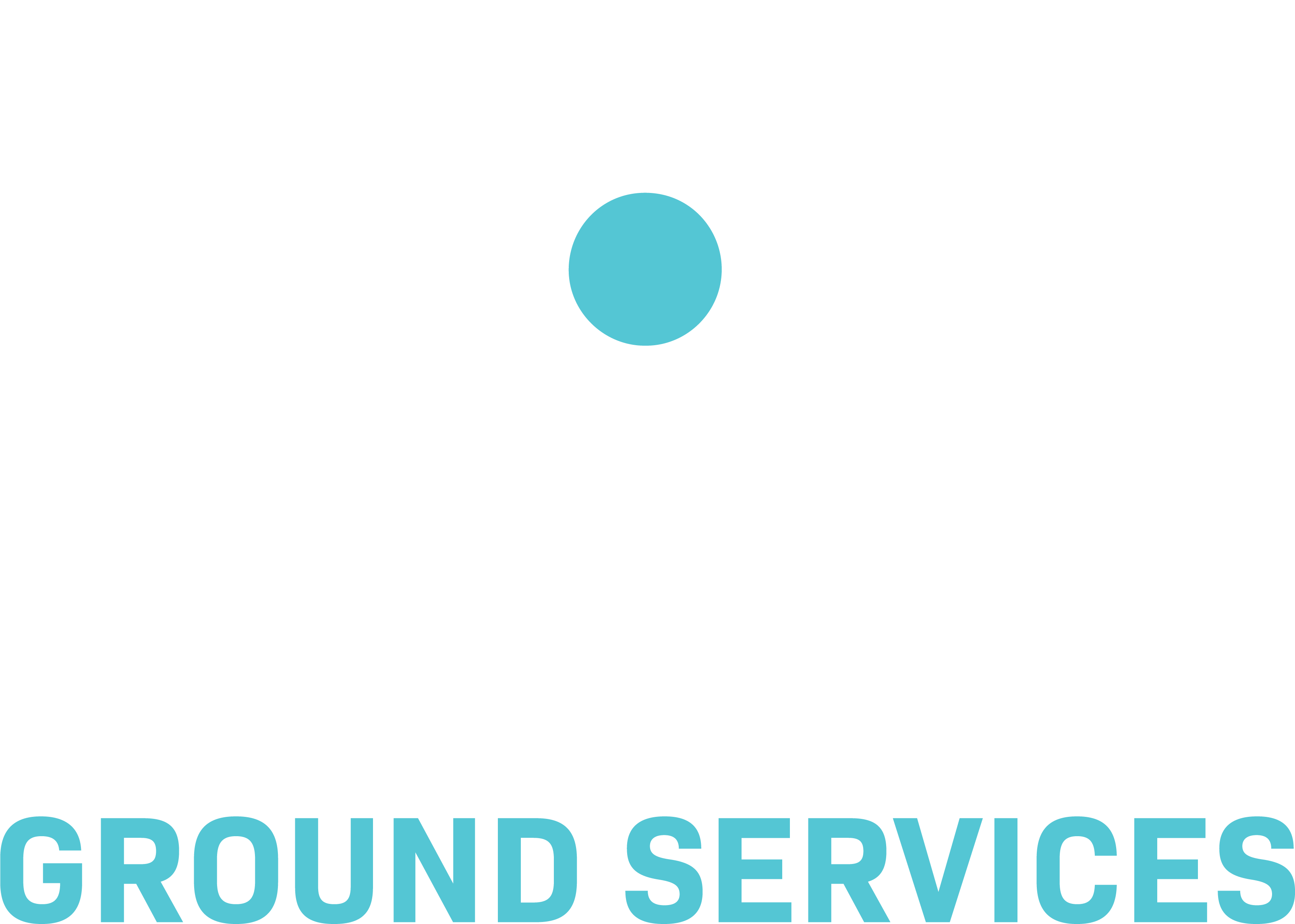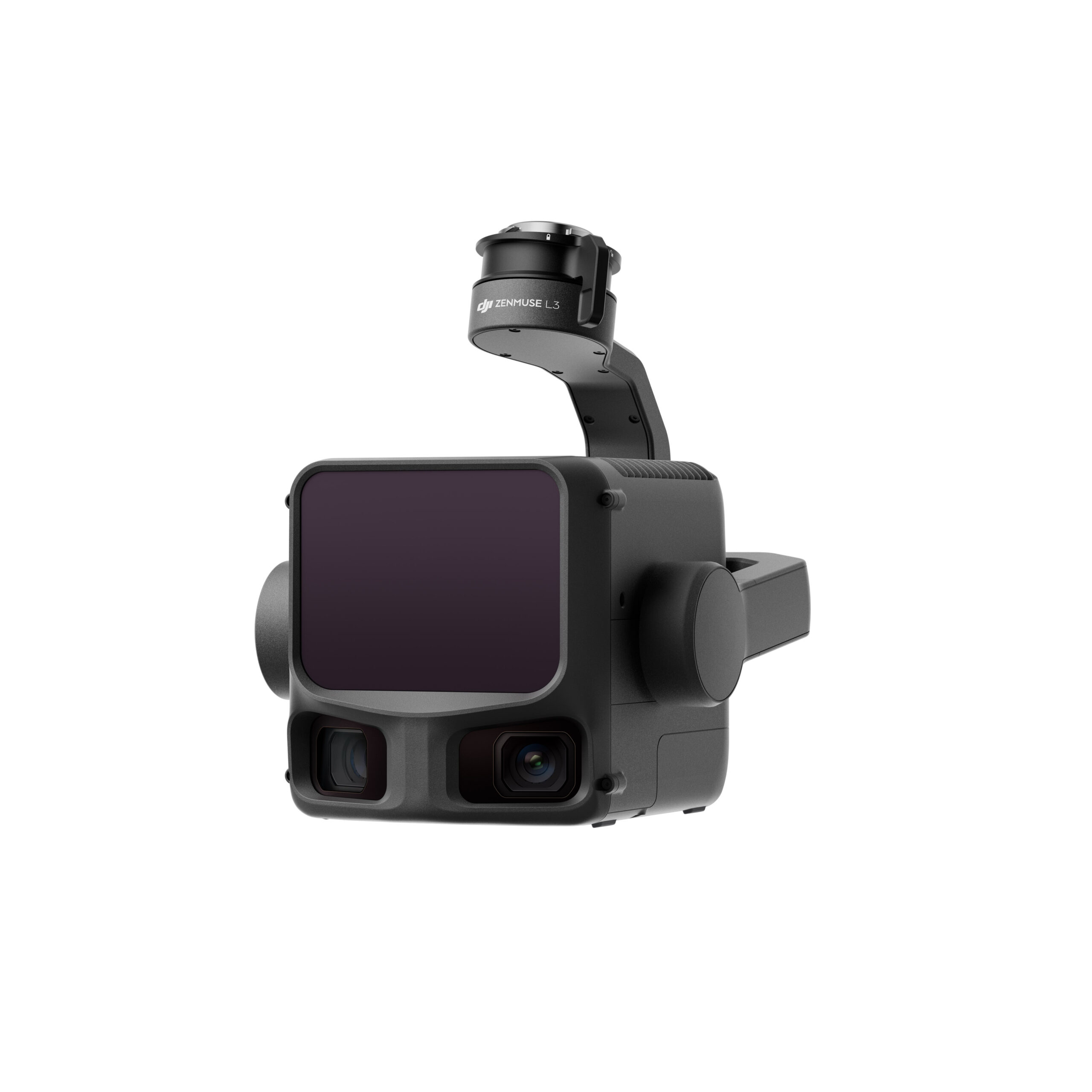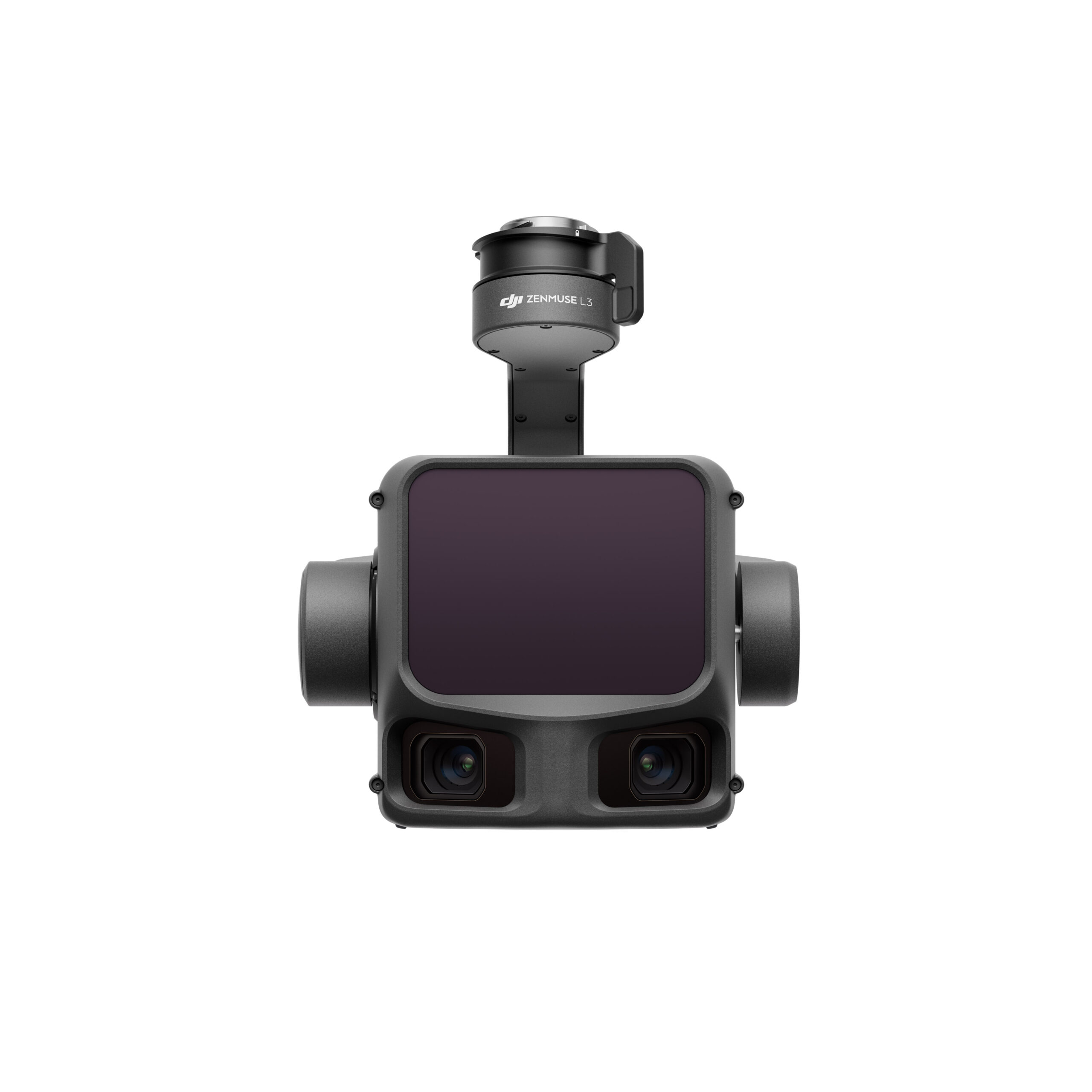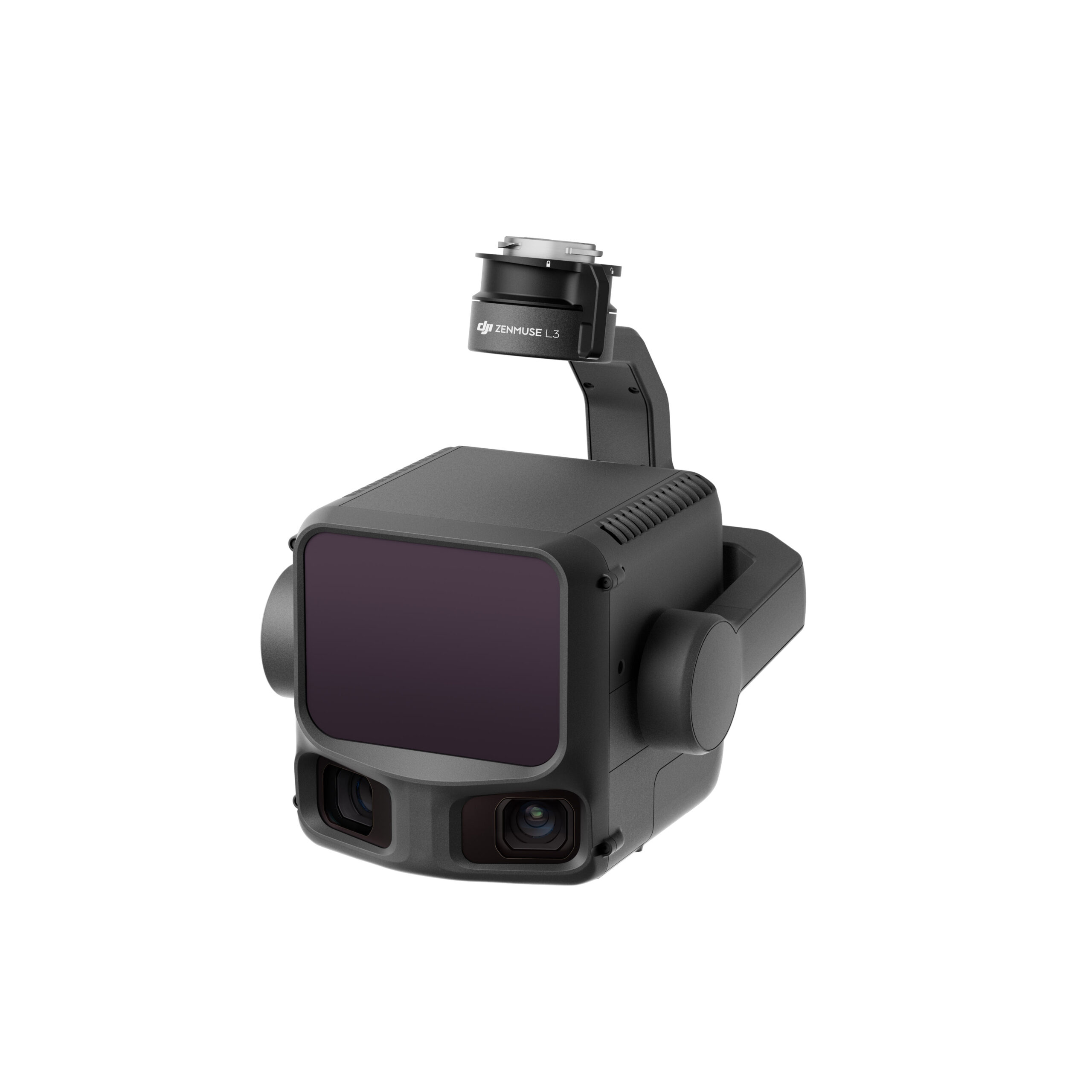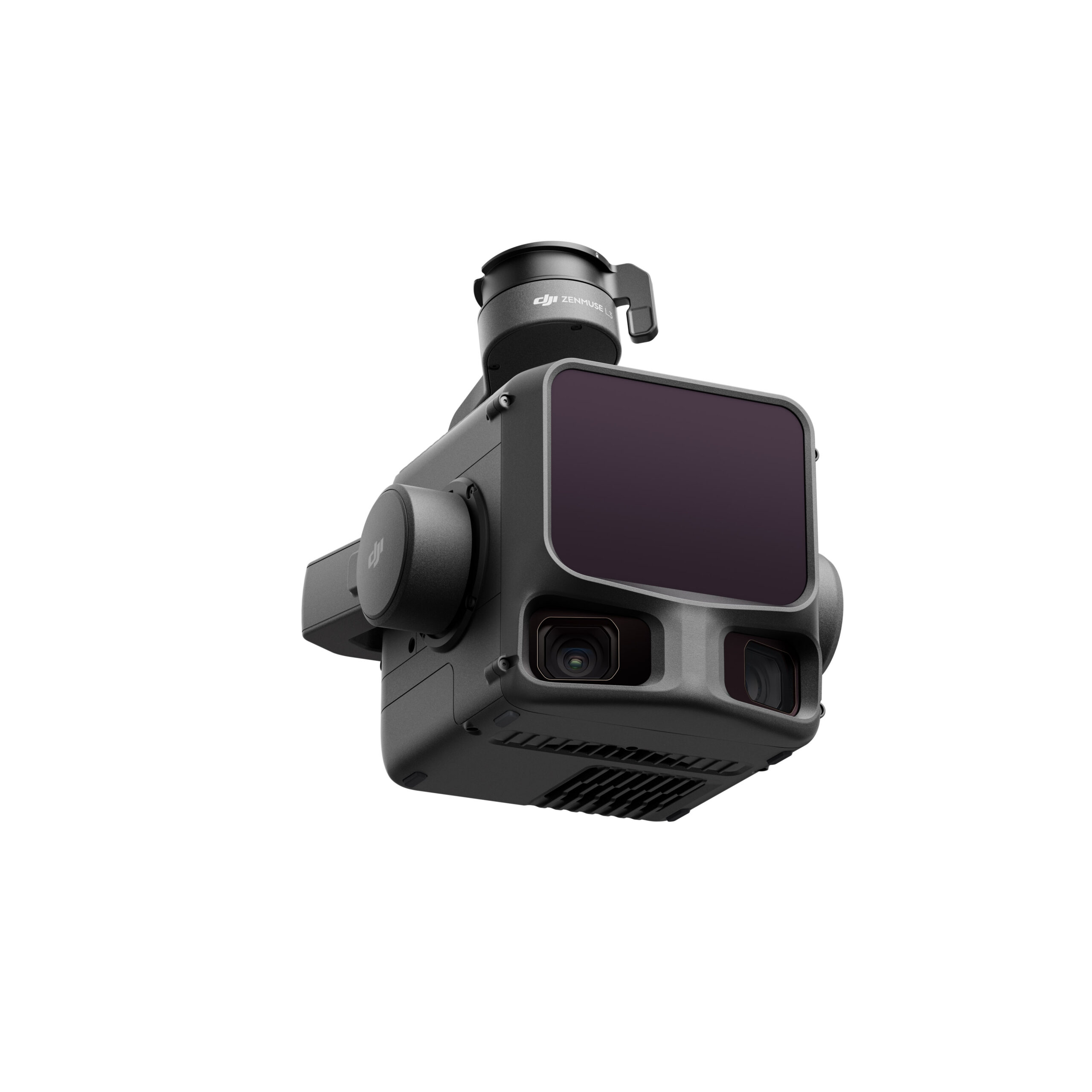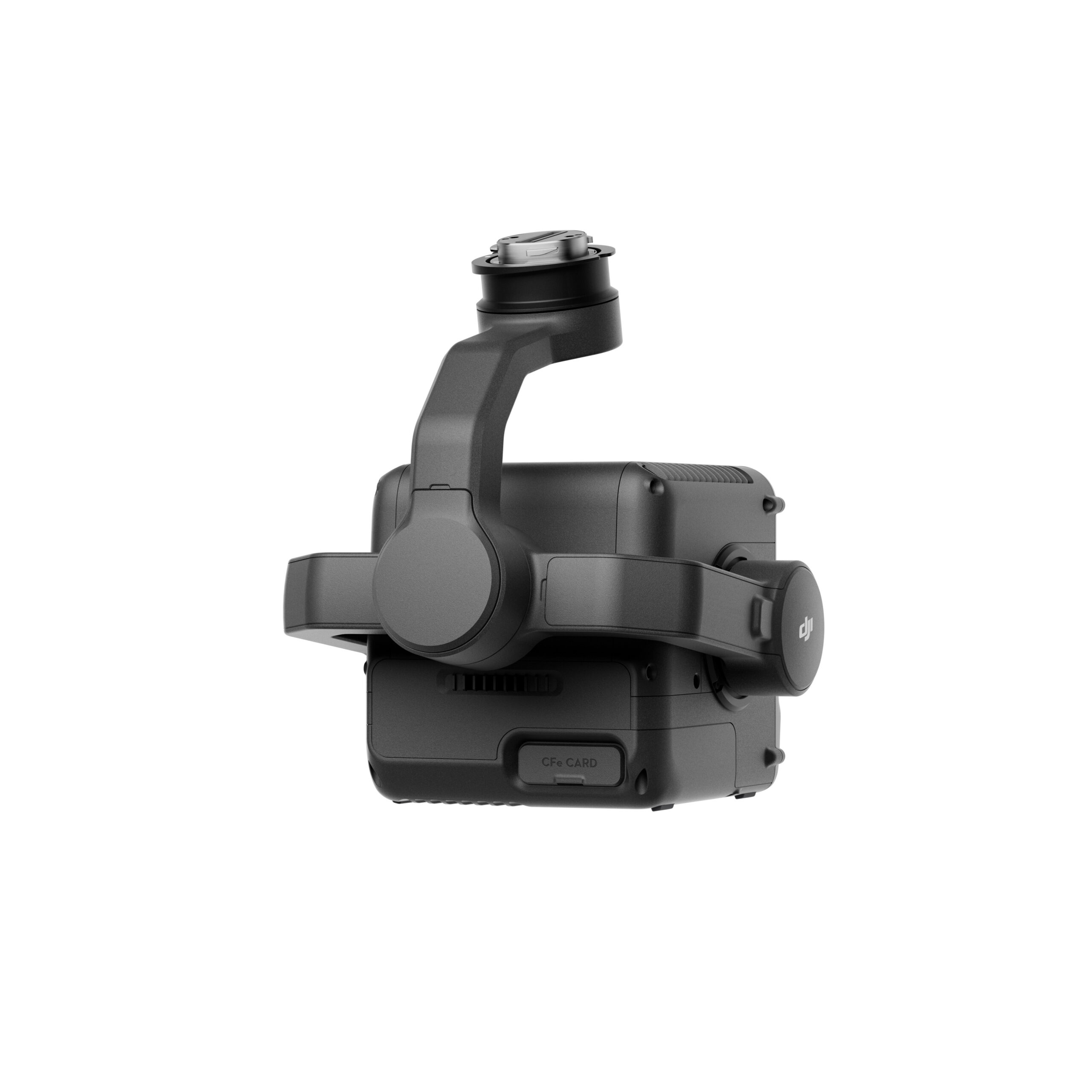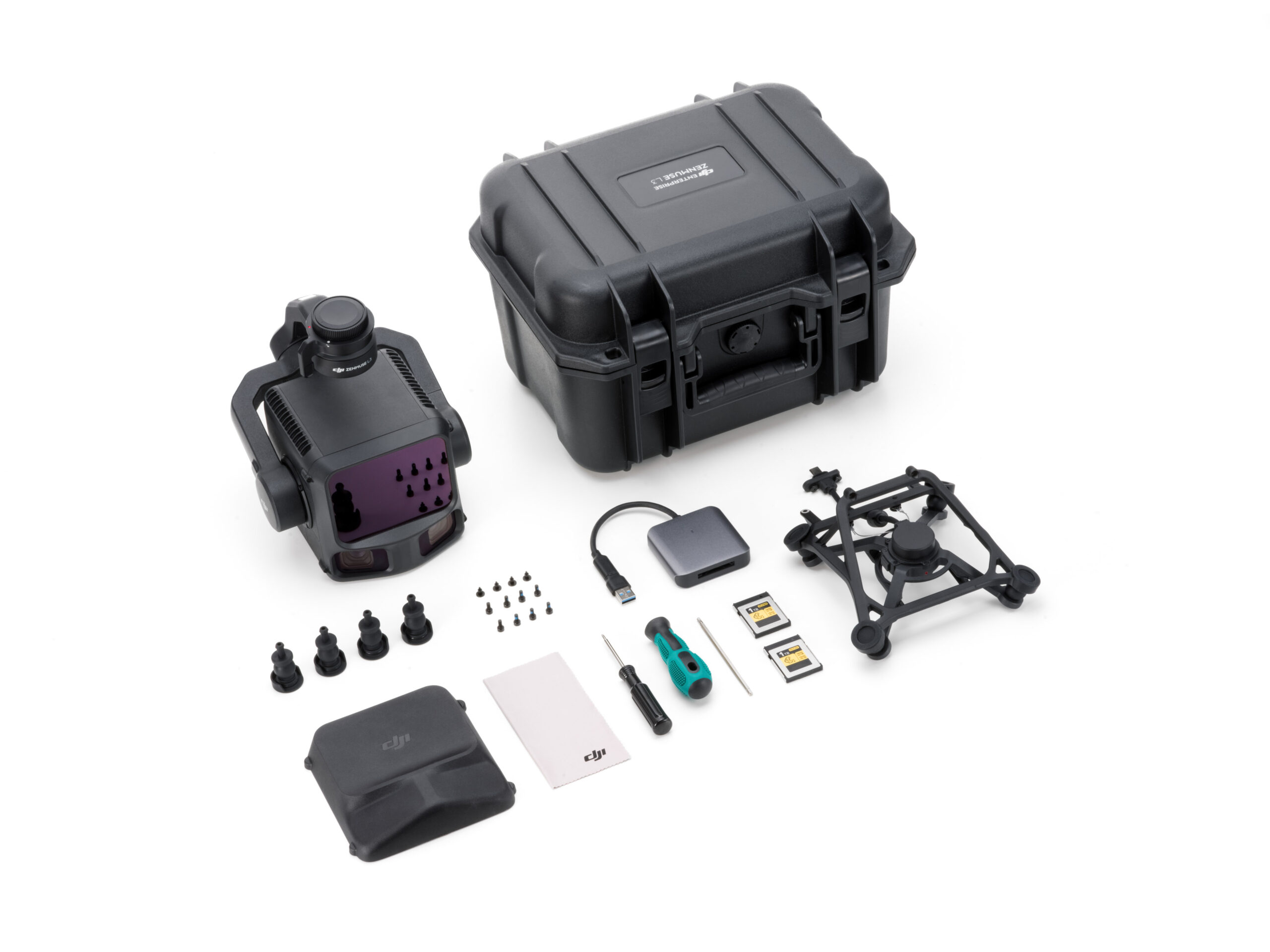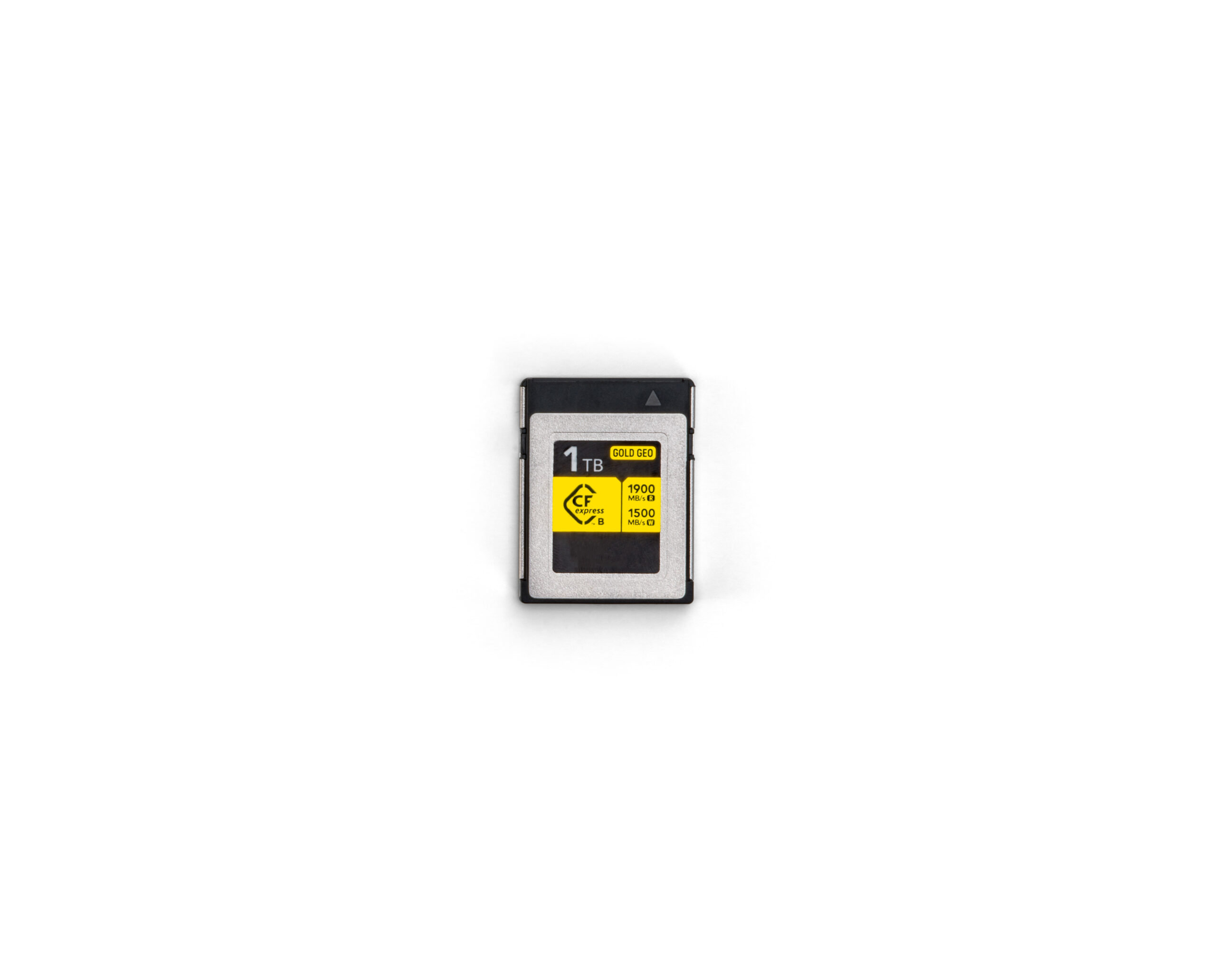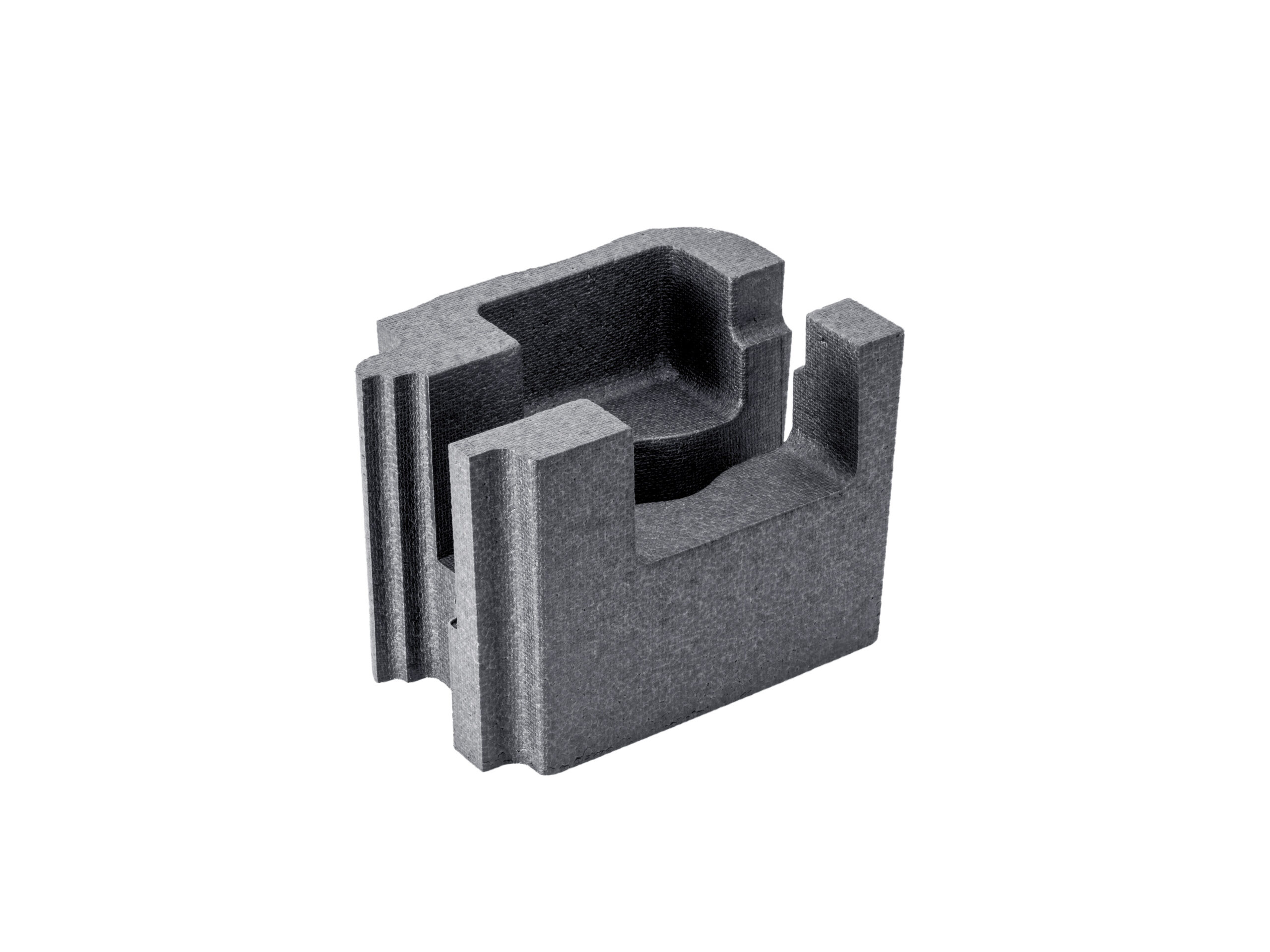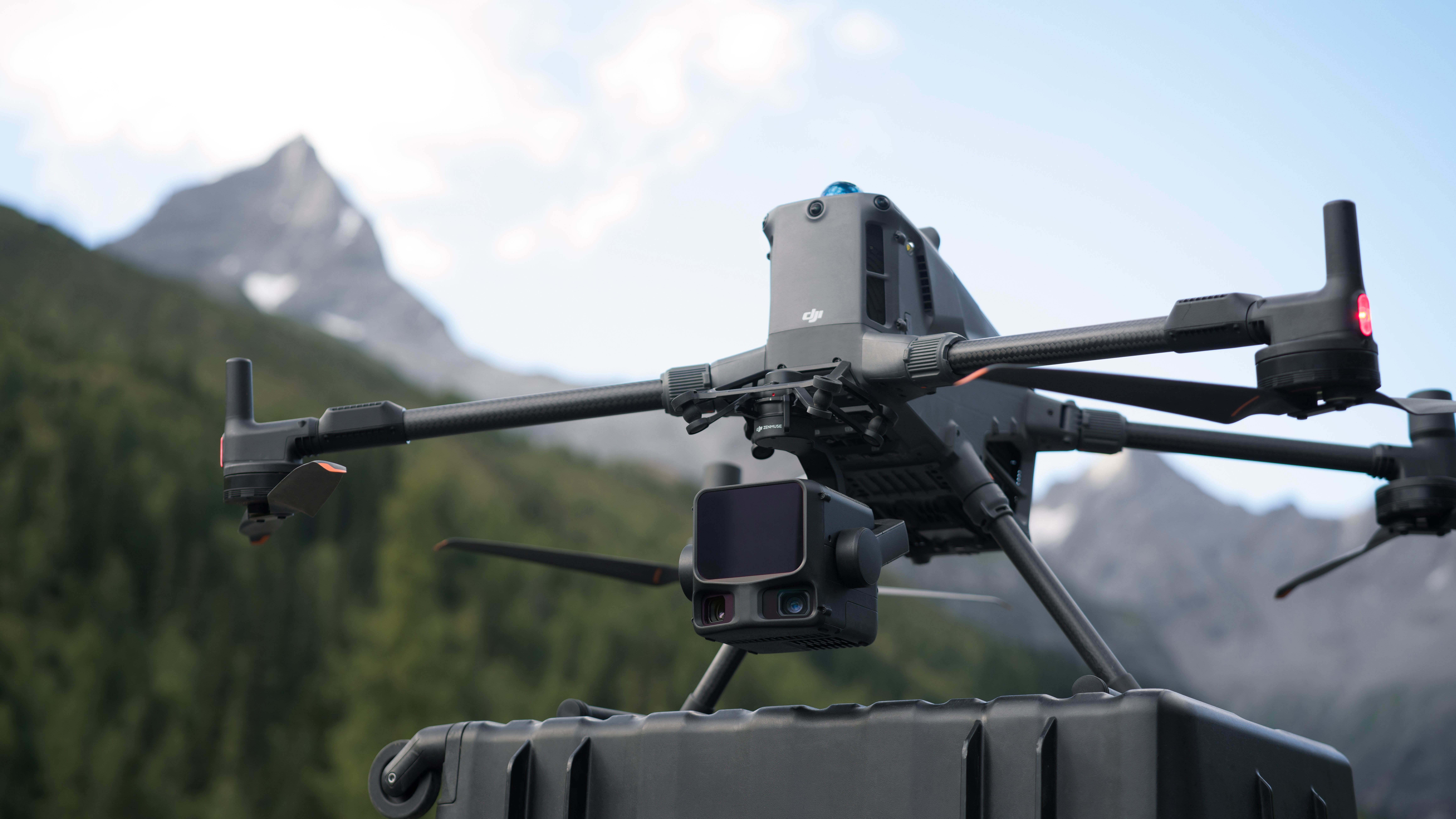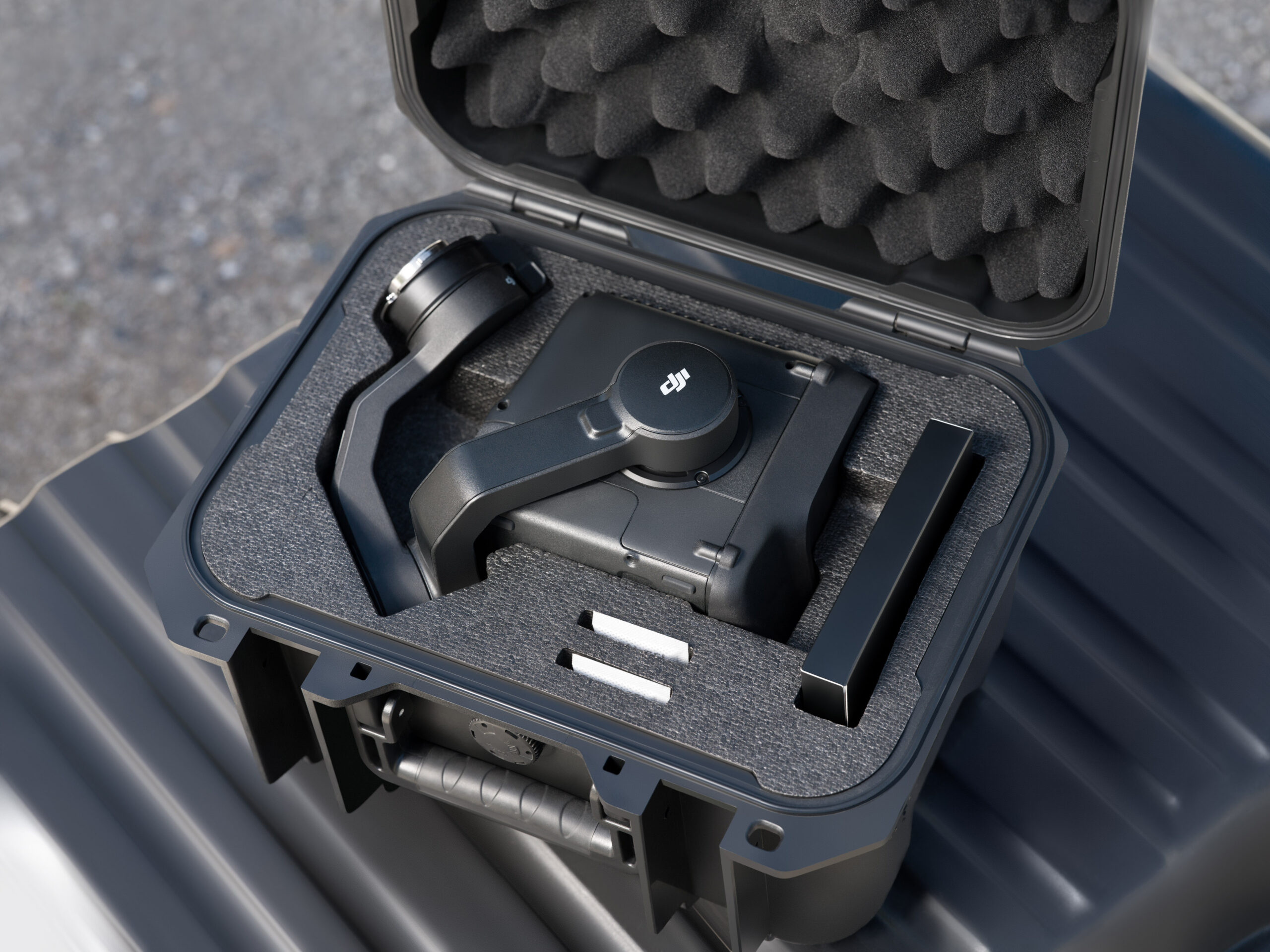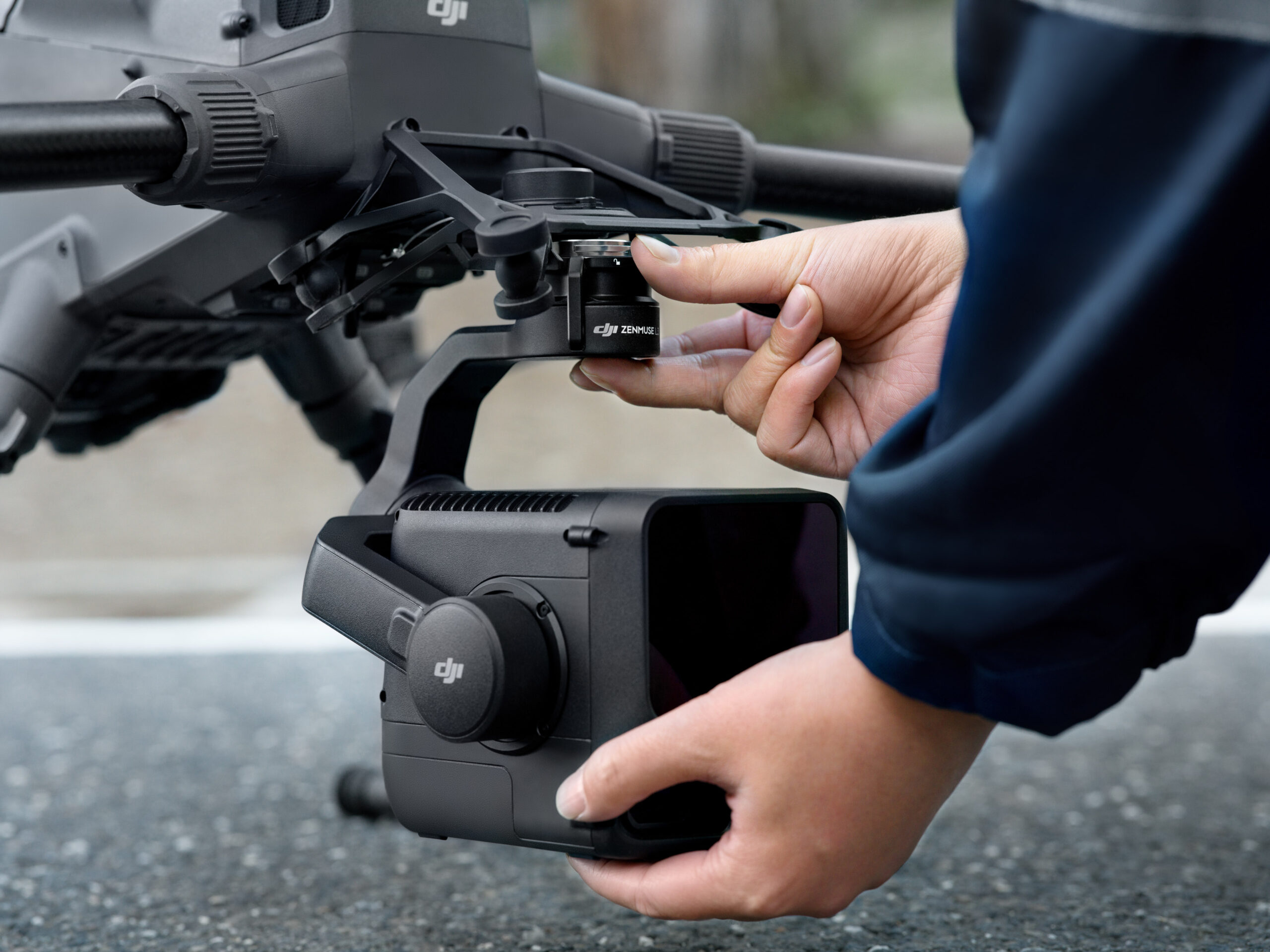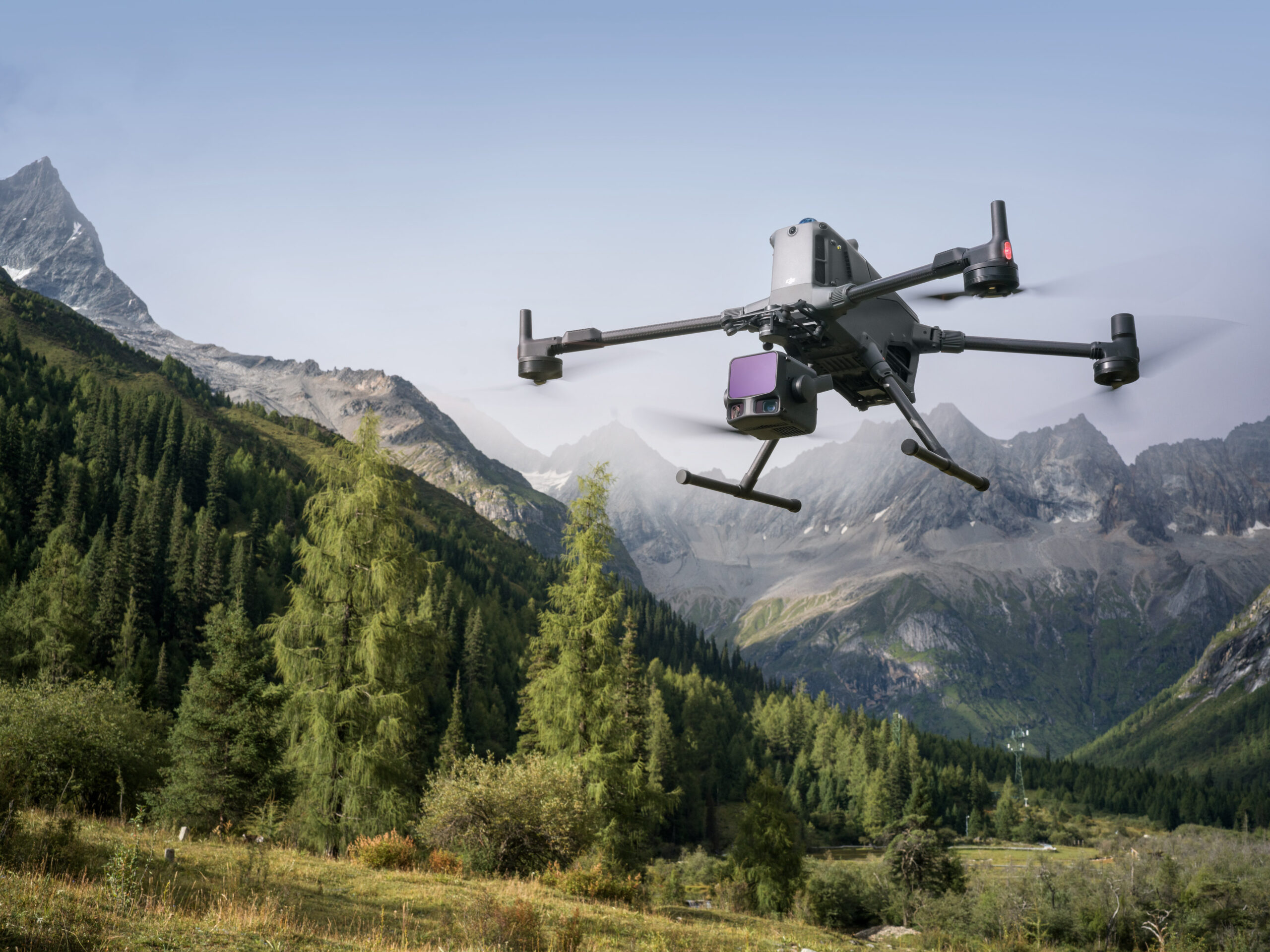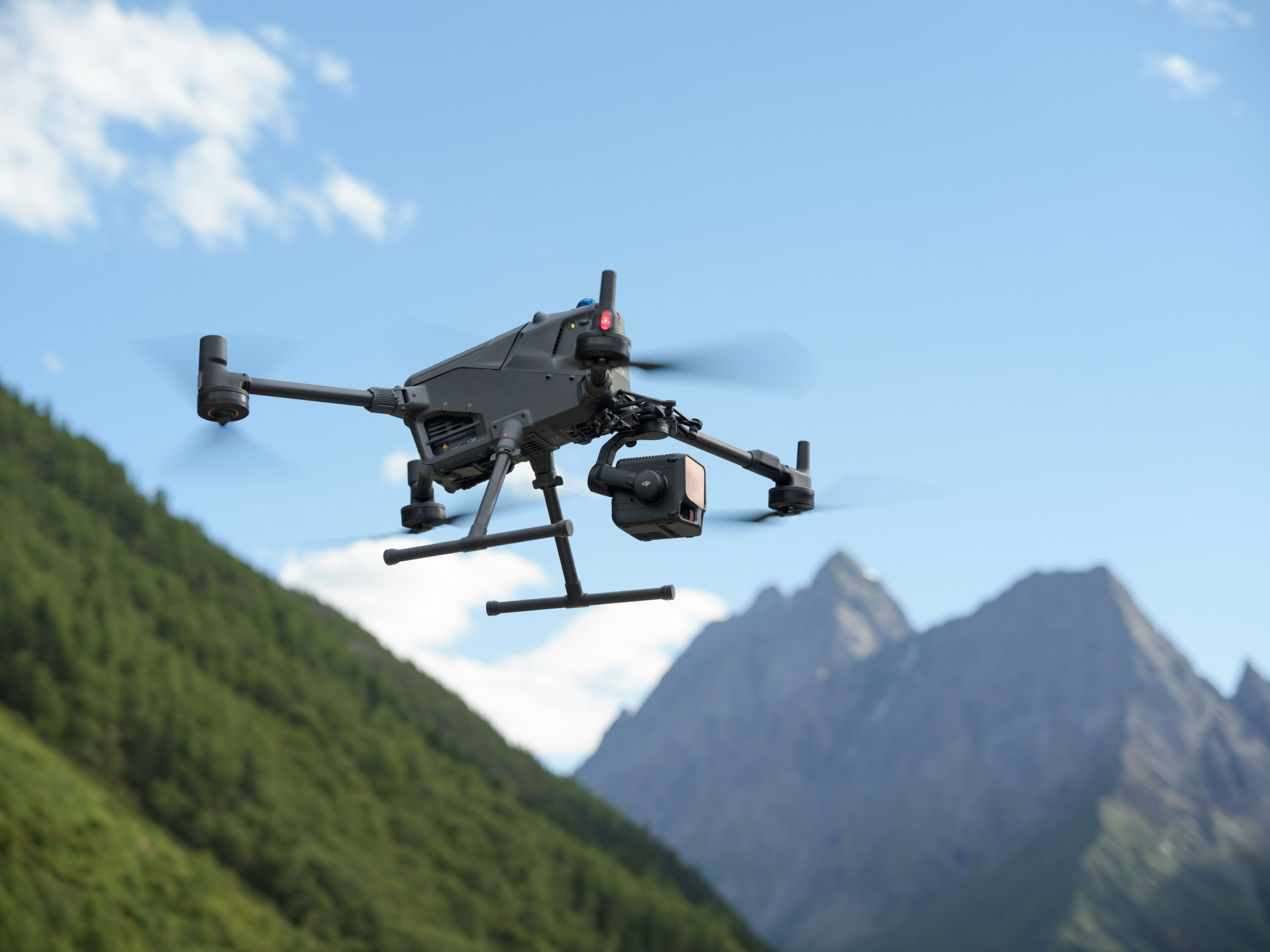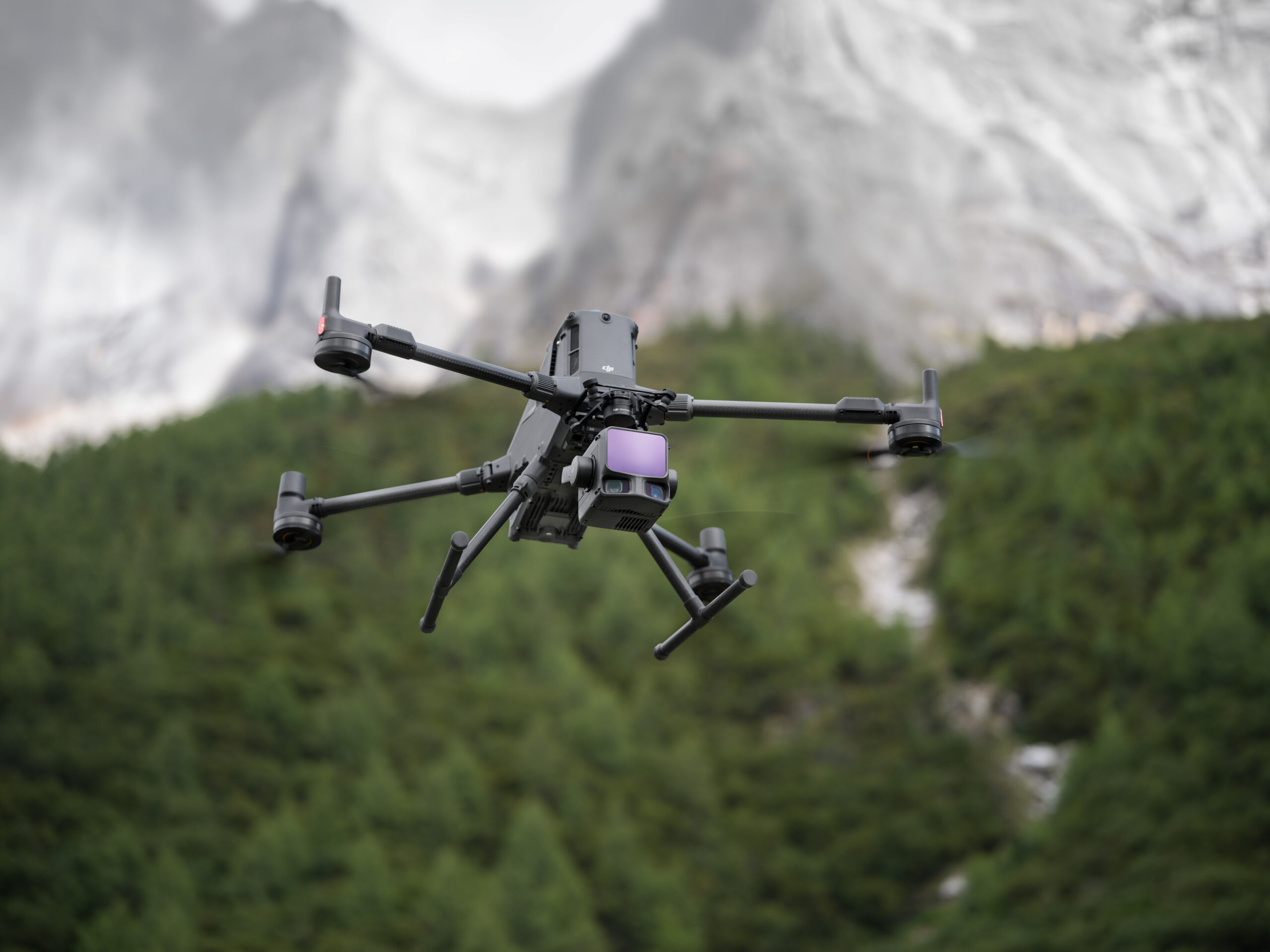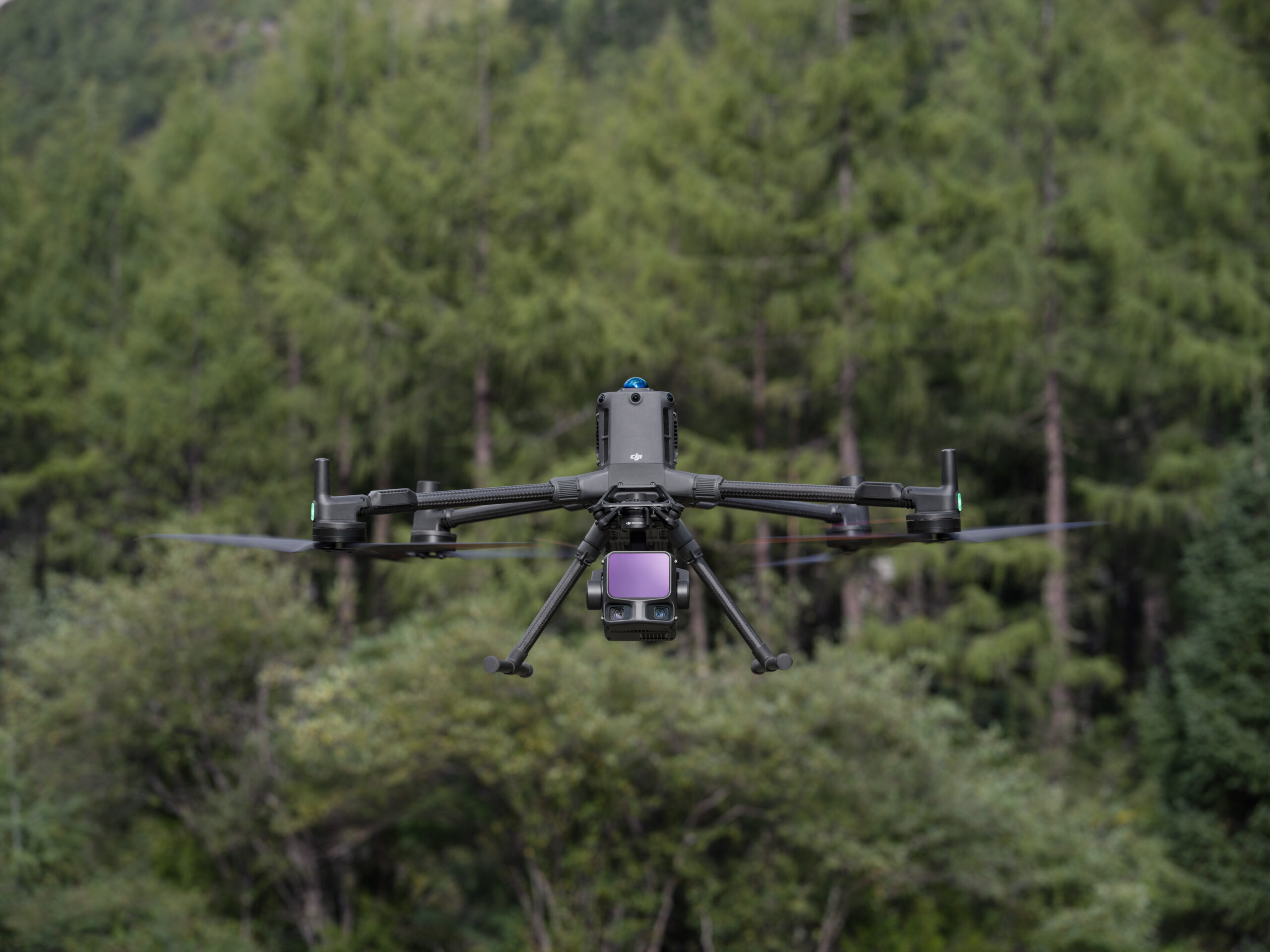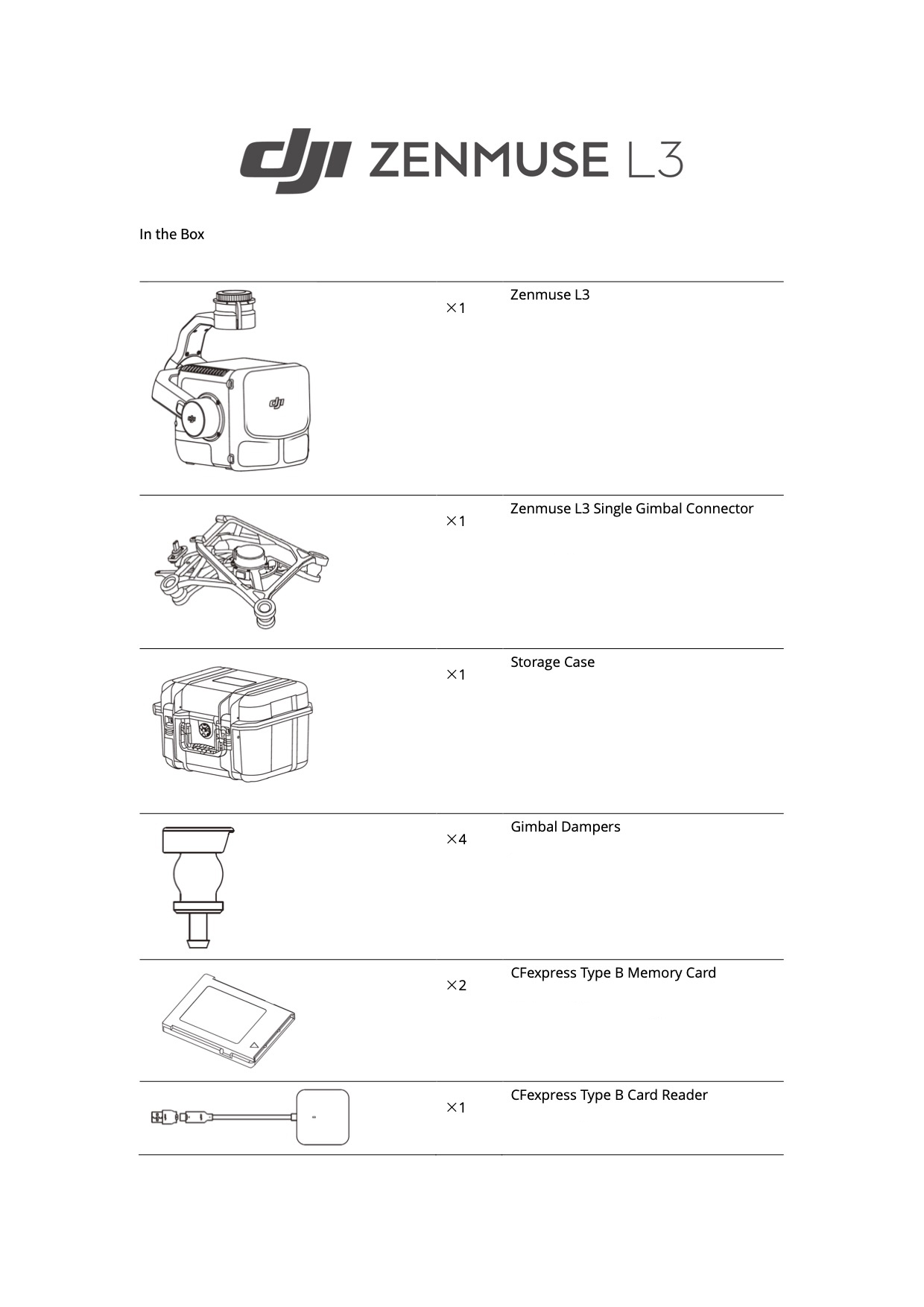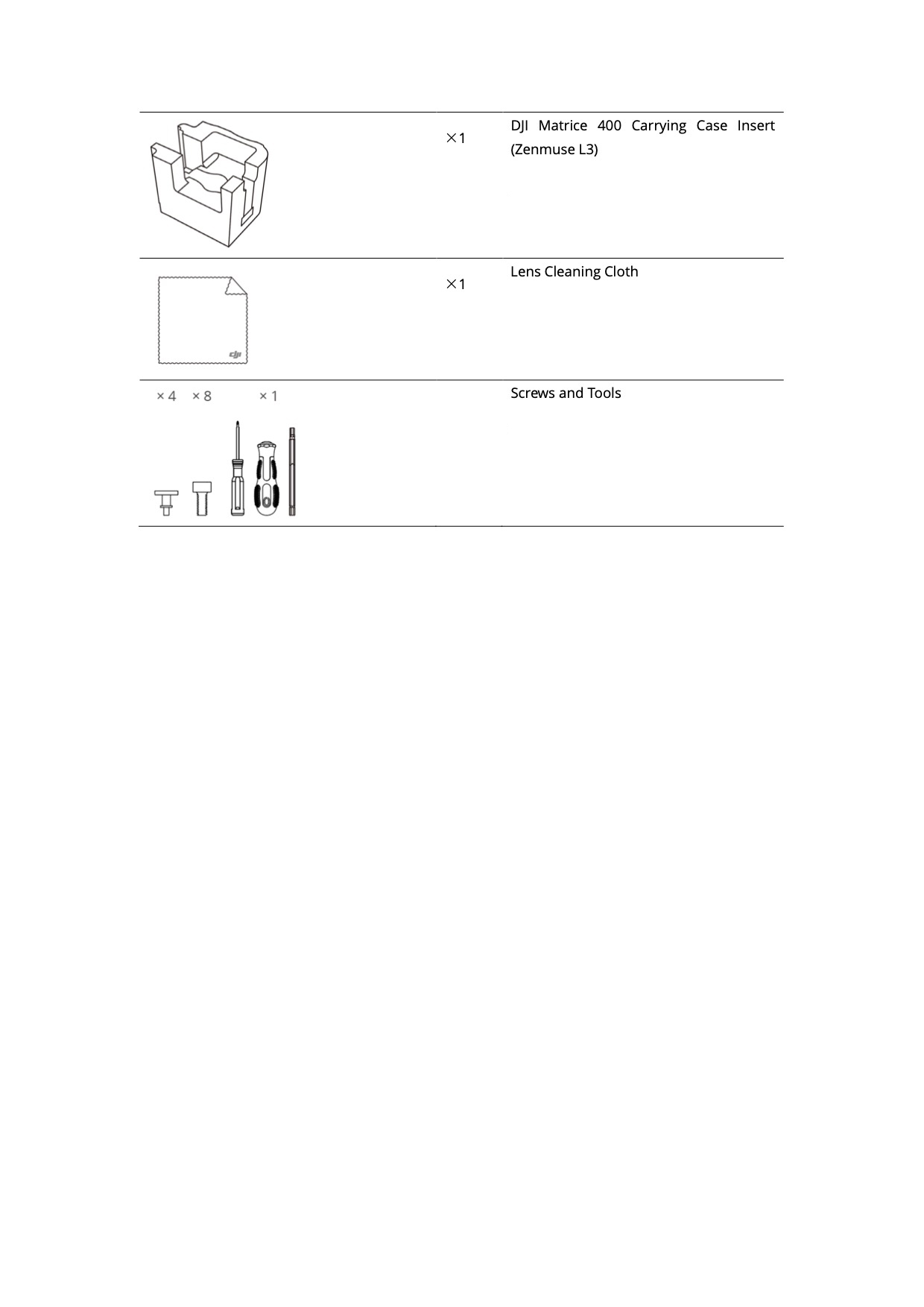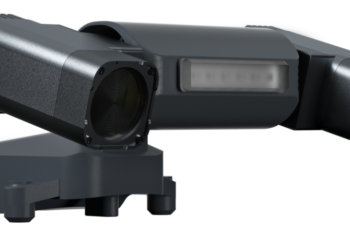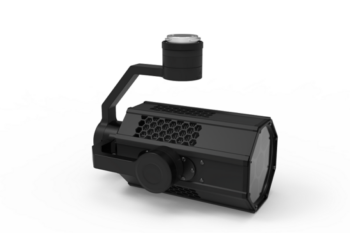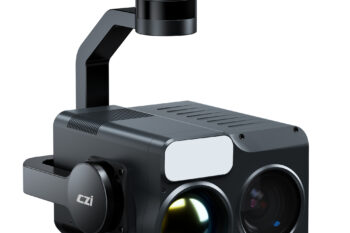Beskrivelse
DJI’s First Long-Range, High-Accuracy Aerial LiDAR System

See Through, Far and True
Discover how DJI’s Zenmuse L3 redefines aerial LiDAR mapping with exceptional range, accuracy, and efficiency for professional geospatial missions
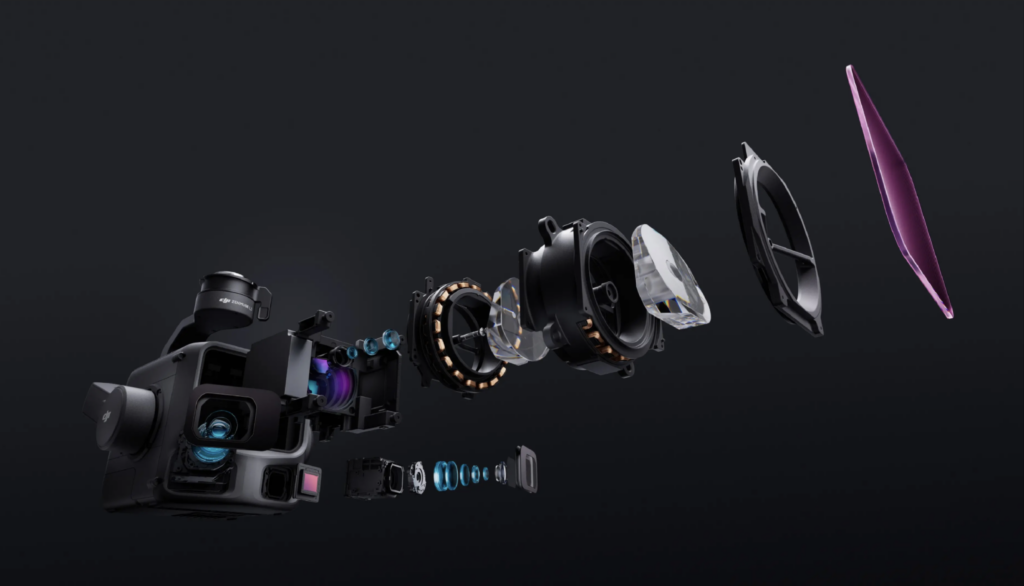
DJI has taken a major step forward in LiDAR innovation with the launch of Zenmuse L3, a system designed to make high-precision aerial mapping faster, easier, and more accessible for professionals across industries.
Built upon years of experience in aerial imaging and surveying, the L3 represents a breakthrough in how efficiency and accuracy can coexist in a single payload. From large-scale topographic surveys to power-line inspections and infrastructure modeling, it gives mapping specialists, engineers, and environmental researchers a tool that simplifies complex workflows while delivering survey-grade precision.
By seamlessly connecting with DJI Terra, Modify, and FlightHub 2, Zenmuse L3 brings together planning, data capture, processing, and visualization: forming an end-to-end ecosystem that redefines what professionals can expect from an aerial LiDAR system.
Pushing LiDAR Range and Clarity to New Limits
Long Range, Wide Coverage
Zenmuse L3 achieves a maximum detection range of 950 m at a pulse rate of 100 kHz, tested under 100 klx ambient light and on objects with 10% reflectivity. The adjustable pulse rate allows for flexible power output and optimal adaptation to different operational scenarios.
Small Spot, High Energy
With a laser beam divergence of just 0.25 mrad (1/e²), the spot size at the same range is about one-fifth that of Zenmuse L2, enabling detection of smaller objects such as power lines and branches.
Higher energy density results in stronger penetration capability, significantly increasing ground point density beneath vegetation and enabling high-accuracy reconstruction of complex terrains and structures.
Adjustable Pulse Rate, Returns and Scanning Modes
Adaptability for the task in hand is another highlight of the Zenmuse L3. With maximum laser pulse emission frequency of 2 million points per second and the support for up to 16 returns [4], the L3 is suited for diversed mapping scenarios.
Point cloud density and penetration capability can be adjusted to fit needs from high-accuracy mapping to complex environments, resulting on highly accurate spatial reconstruction.
Furthermore, the L3 offers Linear, Star-Shaped, and Non-Repetitive scanning modes for different operational scenarios:
Linear: Achieves more consistent point cloud distribution, ideal for high-accuracy terrain mapping.
Star-Shaped: Balances accuracy with multiple scan angles and penetration capability, well-suited for forests or dense urban environments.
Non-Repetitive: Provides multiple scan angles and broader coverage, optimized for power line inspections and other complex structural surveys.
Clearer Reconstructions and Mapping Efficiency with Dual RGB Cameras
Dual 100MP RGB Mapping Cameras
Precision mapping requires not only distance but detail — and the Zenmuse L3 delivers both.
Equipped with dual 100MP 4/3 CMOS RGB sensors and a mechanical shutter, it captures high-resolution imagery with remarkable clarity and consistency. These cameras not only enable the generation of true-color point clouds for more realistic visualization, but also significantly improve efficiency when capturing photogrammetry data, reducing flight time while maintaining exceptional accuracy.
107° Ultra-Wide FOV
Complementing the LiDAR’s long-range capabilities, the dual cameras provide an expansive 107° horizontal field of view (FOV). This ultra-wide perspective allows every flight to cover a broader area, reducing mission time while maintaining data precision. Even with just a 20% LiDAR side overlap, users can capture data for both digital orthophoto maps (DOM) and digital elevation models (DEM) in a single flight — streamlining workflows and maximizing efficiency for large-scale mapping projects.
Elevated Performance: Accuracy Meets Efficiency
With the Zenmuse L3, DJI has refined every link in the data chain: from positioning and ranging to image capture to ensure that each dataset meets survey-grade standards.

Equipped with an enhanced POS system that achieves a heading and pitch accuracy of 0.02° and 0.01°respectively (post-processed, 1σ), along with DJI’s self-developed LiDAR with ranging repeatability of 5 mm at 150 m (1σ) and microsecond-level time synchronization, the Zenmuse L3 take long-range aerial LiDAR performance to the next-level.
LiDAR Data Accuracy
Zenmuse L3 delivers vertical accuracy better than 3 cm at 120 m altitude, better than 5 cm at 300 m, and better than 10 cm at 500 m [6], easily supporting mapping projects at 1:500, 1:1000, and 1:2000 scales.
The resulting point cloud thickness is only half that of the Zenmuse L2, enabling advanced analysis and high-accuracy applications even in complex environments.
RGB Data Accuracy
Thanks to its dual 100 MP RGB mapping cameras, the Zenmuse L3 achieves a ground sample distance (GSD) of 3 cm even at a 300 m flight altitude [7].
Real-time position synchronization allows for operation without ground control points (GCPs), producing highly accurate, visually rich imagery for precision mapping.
High Ground Point Density
In challenging environments such as dense vegetation or uneven terrain, maintaining ground visibility is critical for accurate mapping. Building on its optimized laser design, the Zenmuse L3 delivers superior penetration performance, capturing more ground points with greater completeness.
This significantly enhances the accuracy and integrity of terrain data, ensuring a reliable foundation for precise modeling and surface reconstruction.
High Efficiency: Up to 100 km² per Day
Efficiency defines productivity in aerial mapping, and the Zenmuse L3 is designed to deliver both.
When mounted on the DJI Matrice 400, it achieves outstanding coverage efficiency at a flight altitude of 300 meters, a single mission can map up to 10 km², enabling as much as 100 km² of daily coverage.
At a lower altitude of 120 meters and a flight speed of 15 m/s, a single mission can still cover up to 4 km² (around 1,000 acres), resulting in a mapping efficiency that is at least 54% higher compared with the Zenmuse L2. This flexibility allows operators to maintain high productivity across different project scales and terrain types.
Optimized End-to-End Workflow: From Capture to Application
Data Capture Versatility and Efficiency
Beyond capturing LiDAR and RGB data simultaneously, Zenmuse L3 maximizes operational efficiency by allowing multiple mapping deliverables to be produced from a single flight. This integration streamlines workflows reducing the need for repeated missions and post-processing while ensuring consistent alignment between LiDAR and RGB datasets.
From digital elevation and orthophoto maps to 3D reconstructions, every dataset is captured with survey-grade precision, giving professionals faster access to ready-to-use results for analysis and application.
DJI Enterprise’s Integrated Ecosystem
Seamless integration lies at the core of Zenmuse L3
Within DJI’s ecosystem, it forms a complete end-to-end mapping workflow that connects data acquisition, processing, and application into one unified chain.
This integrated approach enables professionals to plan missions, capture data, process results, and generate outputs within a single, cohesive platform—simplifying operations while improving overall efficiency.
Compared with traditional multi-platform setups, the DJI ecosystem eliminates compatibility barriers and reduces manual workload. From DJI Pilot 2 for mission planning, to DJI Terra and Modify for data processing and visualization, every step is tightly connected.
The result is a streamlined, faster, and more intuitive workflow that empowers users to complete complex mapping tasks with greater precision and confidence.
Get Started with DJI Zenmuse L3
The DJI Zenmuse L3 represents a major leap forward in aerial LiDAR innovation — combining 1535 nm long-range laser technology, dual 100 MP RGB mapping cameras, and a high-precision POS system into one compact, integrated solution. From long-range topographic surveys to detailed infrastructure modeling, L3 empowers professionals to capture, process, and analyze geospatial data with unmatched accuracy and efficiency.
By seamlessly integrating with DJI Terra, DJI Modify, and FlightHub 2, Zenmuse L3 completes a truly end-to-end workflow that covers every stage — from flight planning to data visualization. Whether deployed for forestry management, power line inspection, or large-scale terrain mapping, L3 delivers the precision and reliability required for mission-critical operations.
Explore how DJI’s most advanced LiDAR system helps you see through, far and true — and experience a new level of clarity in aerial mapping.

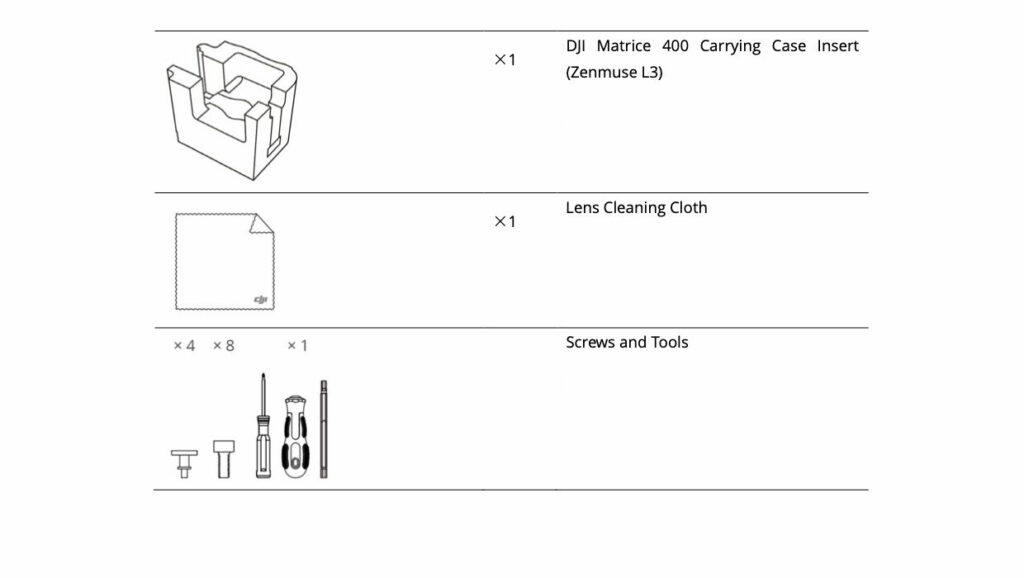
System Specifications
-
Product Name
-
Zenmuse L3
-
-
Point Cloud System Accuracy
-
At 120m Flight Altitude:
Vertical Accuracy: 3 cm (RMSE)
Horizontal Accuracy: 4 cm (RMSE)
-
At 300m Flight Altitude:
Vertical Accuracy 5 cm (RMSE)
Horizontal Accuracy: 7.5 cm (RMSE)
Measured under the following conditions in a DJI laboratory environment:
1. The field contained objects with obvious angular features. DJI Matrice 400 was linked to a position-calibrated D-RTK 3 Multifunctional Station. The flight route was planned using DJI Pilot 2’s Area Route (with Calibrate IMU enabled) with Linear scanning. The flight speed was set to 15 m/s, gimbal pitch to -90°, and each straight segment of the flight route was less than 3300 m.
2. Using exposed hard ground checkpoints that conformed to the diffuse reflection model.
3. DJI Terra was used for post-processing with Optimize Point Cloud Accuracy enabled.
-
Point Cloud Thickness
-
1.2 cm@1σ (120m nadir flight altitude)
2 cm@1σ (300m nadir flight altitude)
-
Measured in Linear scanning mode, using check points on 80% reflectivity objects, with neither point cloud optimization nor downsampling enabled in DJI Terra. For 6σ, multiply the listed thickness by 6.
-
Combined Horizontal FOV (Dual RGB Mapping Cameras)
-
107°
Composed by merging images from two cameras with a 45° optical axis angle between them.
-
-
RGB Ground Sampling Distance (GSD)
-
Average Value: 3 cm (300m nadir flight altitude)
For detailed calculation methods, refer to the user manual available on the Downloads page of the official DJI Zenmuse L3 webpage.
-
-
Weight
-
1.60 kg (without single gimbal connector)
The Zenmuse L3 single gimbal connector weighs 145 g.
-
-
Dimensions
-
192×162×202 mm (L×W×H)
Measured in the default stabilized state after power-on with non-orthogonal gimbal design.
-
-
Power
-
64 W (typical)
100 W (max)
-
-
Supported Aircraft
-
DJI Matrice 400 (requires the Zenmuse L3 single gimbal connector)
-
-
Ingress Protection Rating
-
IP54
-
-
Operating Temperature
-
-20° to 50° C (-4° to 122° F)
-
-
Storage Temperature
-
-40° to 70° C (-40° to 158° F)
-
LiDAR
-
Laser Wavelength
-
1535 nm
-
-
Laser Beam Divergence
-
0.25 mrad (1/e²)
-
-
Laser Spot Size
-
Φ 41 mm@120 m (1/e²)
Φ 86 mm@300 m (1/e²)
-
-
Detection Range
-
700 m@10% reflectivity, 350 kHz
950 m@10% reflectivity, 100 kHz
2000 m@80% reflectivity, 100 kHz
-
1. Range Definition: The range is defined as the distance at which 50% of the emitted laser pulses are detected. If a laser beam hits more than one subject, the total laser transmitter power is split and the achievable range is reduced.
2. Test Conditions: 100 klx ambient light, within the central area of the FOV, using a flat subject with a size larger than the laser beam diameter, a perpendicular angle of incidence, and an atmospheric visibility of 23 km.
3. The maximum detection range is 900 m by default. For a longer range, contact DJI support or an authorized dealer.
-
Wire Detection Range
-
21.6mm Steel Core Aluminum Stranded Wire:
300 m@100 klx, 350 kHz
18.4mm Black PVC Insulated Wire:
100 m@100 klx, 350 kHz
-
1. Range Definition: The distance at which a fully scanned section of wire in mapping achieves a point density of 4 points per meter.
2. Test Conditions: 100 klx ambient light, 23km atmospheric visibility, LiDAR center FOV perpendicular to the wire, Non-Repetitive scanning mode, drone flying along the wire at 15 m/s, and the wire is clean and not aged.
-
Ranging Accuracy
-
Absolute Accuracy: ±10 mm
Repeatability: < 5 mm (1σ)
-
The above specifications can be met under test conditions of 25° C (77° F) ambient temperature, 350 kHz pulse rate, 80% object reflectivity, and distances of 120 m and 300 m. The actual environment may differ from the testing environment. The figure listed is for reference only.
-
Minimum Effective Detection Distance
-
10 m
-
-
Laser Pulse Emission Frequency
-
100 kHz, recommended flight altitude < 500 m
350 kHz, recommended flight altitude < 300 m
1000 kHz, recommended flight altitude < 100 m
2000 kHz, recommended flight altitude < 50 m
-
-
Number of Returns
-
4, 8, 16 returns (100 kHz, 350 kHz)
4, 8 returns (1000 kHz)
4 returns (2000 kHz)
-
-
Cross-Cycle Calculation
-
7 times
-
-
Scanning Mode and FOV
-
Linear Scanning Mode: Horizontal 80°, vertical 3°
Star-Shaped Scanning Mode: Horizontal 80°, vertical 80°
Non-Repetitive Scanning Mode: Horizontal 80°, vertical 80°
-
-
Laser Safety Classification
-
Class 1 (IEC 60825-1:2014)
-
RGB Mapping Camera
-
Sensor
-
4/3 CMOS
-
-
Lens
-
Equivalent Focal Length: 28 mm
FOV: 73.3° (diagonal), 62° (horizontal), 41.2° (vertical)
Aperture: f/2.0-f/11
-
-
Shutter
-
Mechanical Shutter: 2-1/1500 s (f/2.0), 2-1/2000 s (f/2.8-f/11)
Shutter Count: 500,000
Electronic Shutter: 2-1/16000 s
-
-
Photo Size
-
100 MP: 12288×8192
25 MP: 6144×4096
-
-
Minimum Photo Interval
-
JPEG:
25 MP: 0.5 s
100 MP: 1 s
-
RAW or JPEG + RAW:
1.2 s
-
Video Specification
-
Video Format: MP4 (MPEG-4 HEVC/H.265)
Resolution:
4K: 3840×2160@30fps
FHD: 1920×1080@30fps
-
Position and Orientation System (POS)
-
GNSS Update Rate
-
5 Hz
-
-
POS Update Rate
-
200 Hz
-
-
Attitude Error
-
Yaw Angle: 0.02° (post-processed, 1σ)
Pitch/Roll Angle: 0.01° (post-processed, 1σ)
-
-
Positioning Accuracy
-
Horizontal Accuracy: 1.0 cm + 1 ppm (RTK fix)
Vertical Accuracy: 1.5 cm + 1 ppm (RTK fix)
-
-
Supported PPK Differential Data Formats
-
DAT: Generated in Base Station Mode by D-RTK 3 Multifunctional Station and D-RTK 2
RINEX: v2.1x, v3.0x
RTCM: v3.0, v3.1, v3.2, v3.3 (protocols: MSM3, MSM4, MSM5, MSM6, MSM7)
OEM: OEM4, OEM6
-
For field operation, ensure the distance between the Multifunctional Station and the aircraft does not exceed 15 km, and the Multifunctional Station supports satellite observation with more than two GNSS constellations.
Gimbal
-
Degrees of Freedom
-
3-axis (pitch, roll, yaw)
-
-
Angular Accuracy
-
±0.01°
-
-
Mechanical Range
-
Pitch: -135° to +73°
Roll: -90° to +60°
Yaw: -105° to +105°
-
Structural limit, not controllable range.
-
Controllable Range
-
Pitch: -120° to +60°
Yaw: -80° to +80°
-
Roll is uncontrollable, for stabilization only.
-
Self-Check Method
-
Roll Axis: Self-check not required
Yaw Axis: Checks using limit stop
Pitch Axis: Self-check not required
-
-
Mounting Method
-
Detachable DJI SKYPORT (Zenmuse L3 single gimbal connector)
-
Data Storage
-
Raw Data Storage
-
Photo/IMU/Point cloud/GNSS/Calibration files
-
-
Standard Memory Card
-
CFexpress™ Type B Memory Card, sequential write speed 1500 MB/s
-
-
Standard Card Reader
-
Read/write speed > 900 MB/s
-
Software Ecosystem
-
Data Collection
-
DJI Pilot 2
-
-
Data Processing
-
DJI Terra
-
-
Data Application
-
DJI Modify
-
-
Cloud Application
-
DJI FlightHub 2
-
-
Data Format
-
DJI Terra supports exporting point cloud models in the following formats:
Standard Point Cloud Format: PNTS/LAS/LAZ/PLY/PCD/S3MB
-
DJI Modify supports importing point cloud models in the following formats:
Standard Point Cloud Format: LAS
